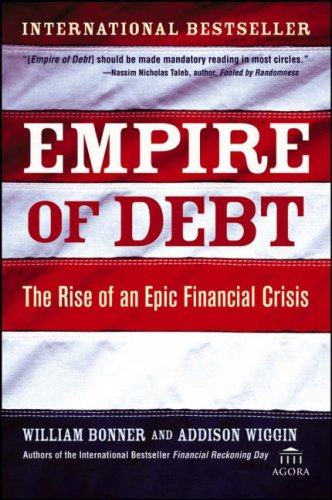
The Silver Pennies: An Investor’s Guide to U.S. Silver Stocks
By David Bond
The Silver Mining Journal 2005
123 pages. $15.95
The Silver Pennies is a little book about a big, shiny subject – silver. More to the point, it’s a book about the silver mining companies in Coeur d’Alene, Idaho. During the 1990s there were as many as 130 mining companies registered in the area around Coeur d’Alene. A few years later, only 30 companies remained. And they weren’t doing much mining. Because of depressed commodity prices, the others merged or vanished.
Then in 2003, the price of silver began to go up. When that happened, mining picked up again in Coeur d’Alene. The silver mines of Coeur d’Alene were ready for what David Bond – the author of the book – calls “the Silver Revolution.”
According to Bond, the Silver Revolution arrived because cell phones, medicines, water purifiers, microprocessors, automobiles, airplanes, rockets, and high-definition televisions don’t work without silver. Which means silver is in demand. And demand drives the price up. For investors, this means opportunity.
After his brief explanation of the Silver Revolution, Bond moves on to “Geology and Mineral Deposits for Dummies.” He furnishes a very basic and easy-to-understand lesson on geology. The reader learns about Georgius Agricola, Leonardo da Vinci, and Nicholas Steno, all of who played a role in the evolution of the science of geology. Bond does a remarkable job explaining the fundamentals of mining and mineral exploration. Light is shed on some little known aspects of mining, many of which are revelatory. For example, as a result of regulatory reforms, mining is “perhaps the cleanest resource business in the world.” And as the author points out, evaluating the potential of mineral deposits is not only expensive but also time consuming. “From the initial discovery, mining may begin in as little as 5 years, if all goes well.” In some cases, “it can take up to 20 years or more until metals are produced.”
Essentially, the author provides one of the best primers on mining and mineral deposits available. And it is all spelled out in just six pages.
The next section of the book is called “Evaluating a Silver Stock.” Here, Bond discusses how silver companies are evaluated: quantity of reserves, the number of ounces per share, the number of ounces divided by market cap, and leverage. In Bond’s opinion, “comparing resources to reserves is an apples-and-oranges proposition.” Another consideration in evaluating a silver company is how expensive is it “to extract silver from the muck at the mill?” This question is answered by metallurgy. Ore in the form of oxide or sulfide is easier to extract than more complex combinations of components. And in mining, ‘easier’ is code for ‘a heck of a lot cheaper.’
As Bond points out, unless one has “advanced degrees in metallurgy, geology or geopolitics” it can be difficult to evaluate mining properties. Thus, the average investor should rely on two factors: location and management. Regarding location, he believes the Coeur d’Alene Mining District fills the bill. There is a large quantity of top-grade ore, which is accessible because of its shallow depth. And as for management, Bond believes the simplest way to find out if the mine manager is any good is “to call them up and talk to them.” And if possible, visit the mine and see what’s going on. For Bond has no doubt that a good manager can take a mediocre mine and make it great. Whereas a bad manager can cripple even a productive mine.
The next section of the book provides profiles of the active silver mining companies in the Coeur d’Alene Mining District. Beginning with Alice Consolidated Mines and ending with Vindicator Silver-Lead Mining Company, Bond provides a snapshot of each company’s management, authorized shares, shares outstanding, market cap, and properties, along with a comment about the company’s pros and cons. Included are bar graphs indicating each property’s 5-year price fluctuations and production volume. Any investor interested in Pacific Northwest mining properties will find this information extremely helpful.
Bond also provides a list of Canadian Silver Penny mining companies. He says these companies “offer exciting opportunities for enterprising investors.” Those listed comprise “his favorites.” He doesn’t go into any detail on these companies, but does provide their website addresses. And he suggests contacting your broker for more information.
The final section of the book is an alphabetical listing of inactive mining companies in the Coeur d’Alene Mining District. Anyone wanting to learn more about these inactive properties will find this list a handy reference tool. Each company is listed according to its old name, its new name, its symbol, its reverse split stock ratio, and the date it became inactive. This information is valuable because as the price of silver goes up, inactive mines are often revived.
Admittedly, The Silver Pennies has a narrow focus – the mines of the Coeur d’Alene Mining District. This means the book will appeal to a specific group of investors, those interested in American silver mines located in the Pacific Northwest. For those people, the book is a necessity. For others, The Silver Pennies furnishes a compact and succinct handbook on the subject of silver mining.
![]() On the Read-O-Meter, which ranges from 1 star (shoddy) to 5 stars (excellent), The Silver Pennies shines its way to 4 stars.
On the Read-O-Meter, which ranges from 1 star (shoddy) to 5 stars (excellent), The Silver Pennies shines its way to 4 stars.


